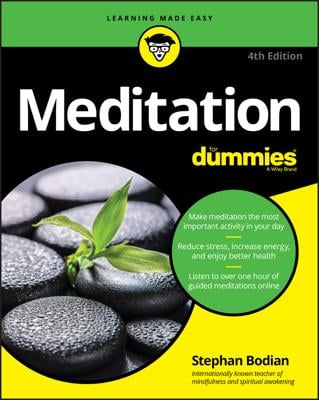You can follow a few simple guidelines for carving out a special place for the practice of meditation. You’ll find that the space you set aside will enrich your life in ways you can’t imagine.
Perhaps you’ve seen those Chinese paintings where a bearded sage in a flowing robe sits in deep contemplation at the base of some majestic peak with a waterfall thundering beside him. Maybe you’ve even had moments when you wished you could become that sage, disappear into the mountains, and meditate in silence and simplicity for the rest of your days. Alas, life doesn’t usually support actualizing such fantasies nowadays!
Why it’s best to stay put during meditation
Just as it helps to have a regular time to meditate, there are some definite advantages to sitting in the same location day after day, instead of moving from place to place. These include
Fewer distractions: As a beginner, you already have plenty of distractions to contend with, both inner and outer. Why add all the nuances of a constantly shifting external environment?
Good vibes: The more often you sit there, the more you infuse your spot and its environs with the energy of your efforts — your good vibes, if you will. Whenever you return, your meditation is buoyed and supported by the energy you’ve invested, just as you feel especially comfortable and relaxed in your favorite chair.
Peaceful memories: When you’ve picked your spot, you start associating it with meditation, especially if you keep your altar or your sitting gear there. And if your meditation involves spiritual aspirations, your spot becomes a sacred site where your deepest insights and reflections take place.
How to pick the right spot for meditation
If you share a small apartment with a partner or friend, or if your family has usurped every square foot of usable space at your house, by all means choose the only vacant corner and make it your own. If you have more leeway, here are a few guidelines for picking your spot:
Off the beaten track: You know the heavily trafficked highways in your house, so be sure to avoid them. And if you don’t want someone inadvertently barging in on you just when you’re starting to settle, tell your housemates when you’re going off to meditate.
Away from work: If you work at home or have a desk devoted to personal business, keep it out of sight — and mind — when you’re meditating. And if possible, remember to turn off your phone; there’s nothing quite as distracting to your mind as wondering who’s trying to reach you now!
Relatively quiet: Especially if you live in the city, you probably won’t be able to eliminate the usual background noises — the drone of traffic, the shouts and laughter of kids on the street. But you should avoid audible conversations and other familiar distractions. These are the kinds of recognizable noises that can pull your mind away from its appointed task, especially when you’re just starting out.
Not too dark or too light: Sitting in a bright, sunny spot may be too energizing and distracting, just as sitting in the dark can put you to sleep. Be sure to modulate the lighting with your attention level in mind. If you’re sleepy, open the blinds or turn on an extra light; if you’re wired, tone down the illumination accordingly.
Fresh air: Because we’re talking breath here, it’s great to have a supply of fresh air where you meditate. Avoid musty basements and windowless closets; besides being bad for your health, they tend to lower your energy (along with your oxygen level) and lull you to sleep.
Close to nature: If you don’t have a tree or a garden outside the window near where you meditate, you may want to have a plant, a vase full of flowers, or a few stones nearby. Not that you’ll be gazing at them while you sit, but natural objects radiate a certain special energy of their own that lends support to your practice.
Set up a meditation altar
Here, the term altar refers to a collection of objects with special meaning that you assemble in one place to inspire your meditations. If you’re a Christian, for example, your altar may include a crucifix or a picture of Jesus; if you’re a Jew, you may have a holy book or a Star of David; or, if you’re a Buddhist, you may choose to contemplate a statue of Buddha.
If you have no particular religious inclinations, you may be quite content with a few stones, a candle, and a potted plant.
Gazing at your altar before you sit can evoke your connection to a spiritual dimension of being — or it can merely remind you of why you’re here: to develop concentration, relax, open your heart, and heal your body. Here are some of the main ingredients that appear on many altars; feel free to improvise and add or subtract as you see fit:
Bells
Candles
Flowers
Incense
Natural objects
Pictures (of nature or inspirational figures)
Sacred texts
Statues (of inspirational figures)
As with your meditation, it’s best to keep your altar simple at first. If you want, you can enrich and expand it over time, or you may prefer to keep a stash of objects and rotate them as the spirit moves you.
One cautionary note about pictures: You may want to devote your altar to mentors, teachers, and other figures whose presence fills you with unadulterated inspiration — and consign to your desk or bureau those loved ones for whom your feelings may be more complex, like children, parents, spouses, and friends.

